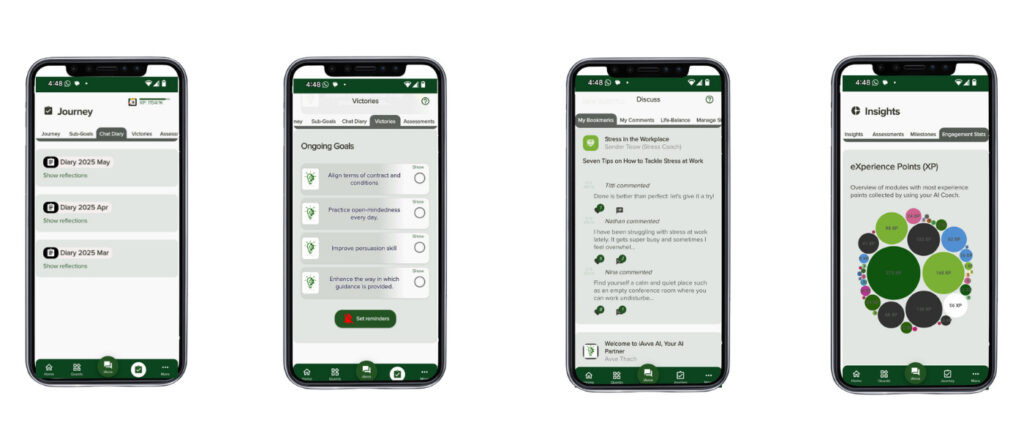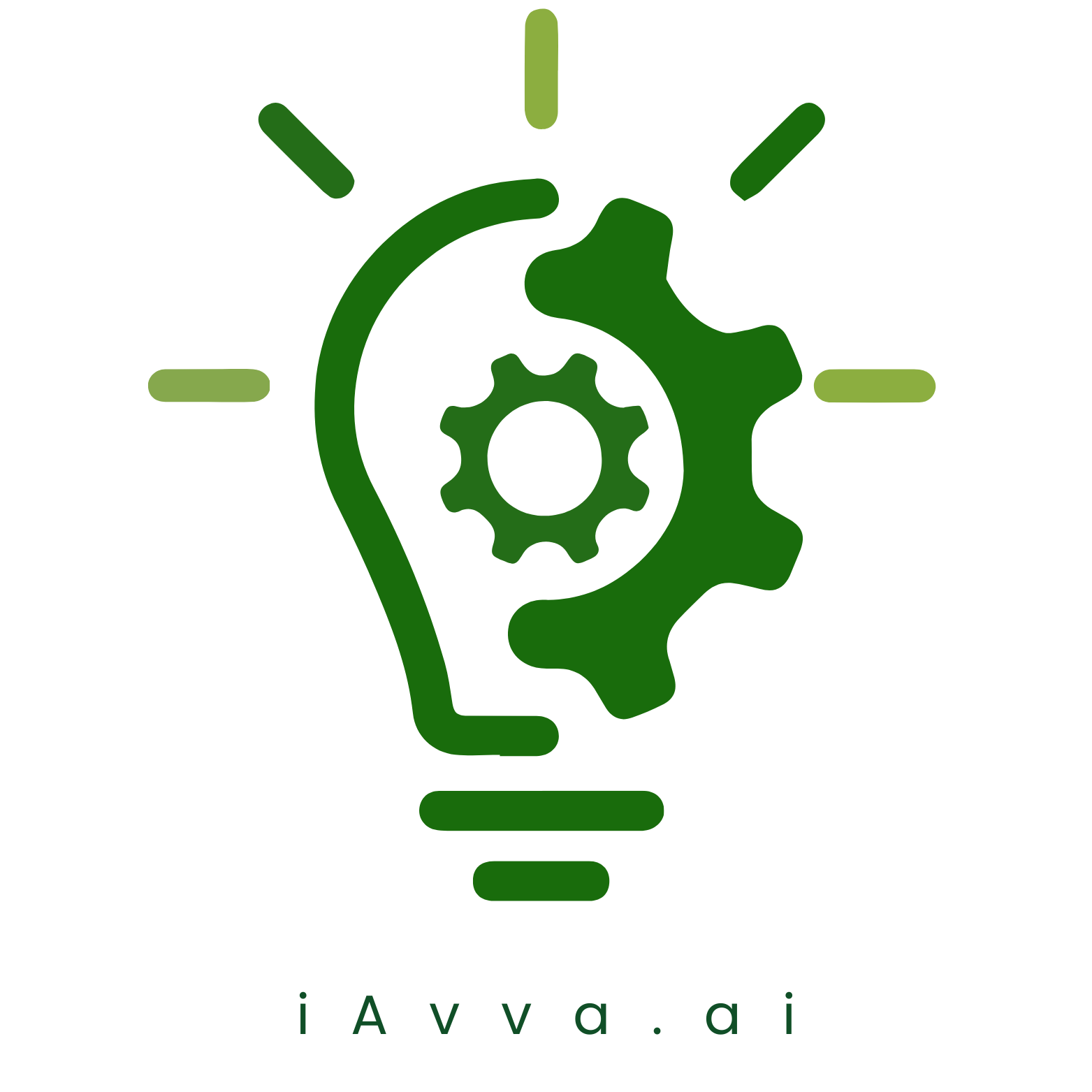Building a Future-Proof AI Strategy for Enterprise Success
Introduction
Welcome to the future of business, where artificial intelligence is not just a buzzword but a game-changer! In a world where data reigns supreme, crafting an effective artificial intelligence strategy is essential for enterprises looking to thrive. Think of it as your corporate GPS: without it, you might end up lost in a fog of algorithms and machine learning jargon.
As we dive into this exciting journey, we’ll explore how to build an AI strategy that not only meets today’s challenges but also anticipates tomorrow’s opportunities. Spoiler alert: it’s all about aligning your business goals with the power of AI!
Did you know? According to recent studies, over 93% of companies are currently navigating digital transformation. Yet, only 75%% believe effective training and coaching are crucial for success. This highlights the importance of a well-structured AI implementation plan!
In this blog post, we’ll break down the key components of an effective AI business strategy from understanding the strategic use of AI to optimizing business processes with artificial intelligence. So grab your favorite beverage and let’s get started on this thrilling ride towards an AI-driven future!

Understanding Artificial Intelligence in Business
Artificial intelligence (AI) is not just a buzzword; it’s the secret sauce that can transform your business into a well-oiled machine. Think of AI as your digital assistant that never sleeps, always ready to crunch data, automate tasks, and provide insights that drive decision-making. But before you dive headfirst into the world of AI, it’s crucial to develop a robust artificial intelligence strategy that aligns with your business goals.
So, what does it mean to integrate artificial intelligence into business? It’s about leveraging AI technologies to enhance operations, improve customer experiences, and ultimately drive growth. This is where an AI business strategy comes into play. It’s not just about implementing shiny new tools; it’s about strategically planning how those tools fit into the bigger picture.
The Role of AI in Modern Enterprises
In today’s fast-paced market, companies are using AI for everything from predictive analytics to customer service automation. According to recent studies:
93% of companies are currently in the midst of digital transformation (International Data Corporation).
This means businesses are not just adopting AI; they’re embedding it into their core operations. The goal? To gain a competitive advantage through strategic use of AI technologies.
Common Misconceptions About AI in Business
- AI is only for large enterprises: False! Small and medium-sized businesses can also leverage AI-driven strategies tailored to their needs.
- AI will replace human jobs: Not necessarily! Instead, think of AI as a tool that complements human skills, allowing teams to focus on higher-value tasks.
- You need tons of data to get started: While data is important, many businesses can start small and scale their efforts as they grow.
The Importance of an Artificial Intelligence Roadmap
A well-structured artificial intelligence roadmap is essential for guiding your organization through the complexities of AI implementation. It helps you identify key objectives and milestones while ensuring alignment with your overall corporate strategy.
Key Takeaway: Developing an effective artificial intelligence strategy isn’t just about technology it’s about aligning with your organization’s goals and preparing for future challenges.
The Importance of an AI Strategy
In the fast-paced world of business, having a well-defined artificial intelligence strategy is like having a secret weapon. It’s not just about adopting the latest tech trends; it’s about strategically leveraging AI to propel your organization forward. Think of it as your roadmap in the wild, unpredictable terrain of digital transformation.
First things first, let’s define what we mean by an AI strategy. An AI strategy outlines how an organization plans to implement and integrate artificial intelligence into its operations and decision-making processes. It’s not just a fancy buzzword; it’s a critical component for achieving long-term goals.
Key Takeaway: A robust AI strategy ensures that your investments in technology align with your business objectives, ultimately driving efficiency and enhancing customer experiences.
Aligning Business Goals with AI Initiatives
An effective AI implementation plan begins with alignment. This means ensuring that your AI initiatives are not operating in a vacuum but are instead closely tied to your overarching business goals. Imagine trying to hit a target without knowing where it is frustrating, right? That’s what happens when AI strategies lack alignment.
- Identify Objectives: Start by pinpointing what you want to achieve with AI be it enhancing customer service, streamlining operations, or boosting sales.
- Create Synergy: Make sure that your AI projects complement existing business strategies rather than compete against them.
- Measure Success: Establish metrics for evaluating the effectiveness of your AI initiatives in relation to your business goals.
Avoiding Common Pitfalls
When developing an artificial intelligence roadmap, it’s essential to avoid common misconceptions that can derail even the best-laid plans:
- One-size-fits-all Approach: Just because something works for one company doesn’t mean it’ll work for yours. Tailor your strategy to fit your unique organizational culture and needs.
- Lack of Training: Implementing an AI-driven strategy without equipping your team with necessary skills is like giving someone a sports car without teaching them how to drive!
- Poor Data Management: Remember, garbage in equals garbage out. Ensure you have robust data governance practices in place before diving into complex algorithms.

The strategic use of AI is not just about technology; it’s about transforming how businesses operate and compete. By developing an effective corporate AI strategy now, organizations can future-proof themselves against inevitable changes in technology and market demands.
If you’re ready to embark on this exciting journey of integrating AI into your business framework, remember: success lies in thoughtful planning and execution. So grab that roadmap and start steering towards innovation!
Key Components of an Effective AI Implementation Plan
When it comes to rolling out an artificial intelligence strategy, diving in headfirst without a plan is like trying to swim without knowing how to float. You might end up flailing around and gasping for air. Instead, let’s break down the essential components of an effective AI implementation plan that can keep you afloat and help you thrive in the digital sea.
-
Assessing Current Capabilities and Needs
The first step is to take a good, hard look at where you currently stand. This means evaluating your existing technology, workforce skills, and data infrastructure. Think of it as taking inventory before throwing a party if you don’t know what snacks you have, how can you plan the menu? An honest assessment will help identify gaps and opportunities for leveraging AI effectively.
-
Developing an Artificial Intelligence Roadmap
Your roadmap is the GPS for your AI journey. It should outline your objectives, timelines, and milestones for implementing your AI business strategy. A well-defined roadmap helps avoid detours that could lead to costly delays or misalignment with business goals. Plus, it keeps everyone on the same page no one likes being left out of the loop!
-
Identifying Key Stakeholders and Resources
No one can do it all alone! Identify who needs to be involved in your AI transformation strategy from tech teams to executive leadership. Make sure you have the right resources in place, whether that’s talent, budget, or technology tools. Remember: aligning these stakeholders with your vision is crucial for driving buy-in and ensuring smooth collaboration throughout the implementation process.
-
Data-Driven Decision Making
Your data is like fuel for your AI engine; without it, you’re just spinning your wheels. Establish processes for collecting, cleaning, and analyzing data as part of your strategic use of AI. This ensures that decisions are based on solid insights rather than gut feelings after all, we’re living in a data-driven world!
-
Continuous Learning and Adaptation
The landscape of artificial intelligence is ever-changing; what works today may not work tomorrow. Incorporate a feedback loop into your plan that allows for continuous learning and adaptation. This means regularly revisiting your strategies to optimize them based on performance metrics and emerging trends in AI technologies.
Strategic Planning for Artificial Intelligence Adoption
When it comes to crafting a robust artificial intelligence strategy, strategic planning is your best friend. Think of it as the blueprint for a high-rise building without it, your AI initiatives could end up looking like a rickety treehouse.
The first step in this journey is to set measurable objectives for AI initiatives. What do you want to achieve? Is it increasing efficiency, enhancing customer experience, or perhaps driving revenue growth? Defining specific goals allows you to measure success and adjust your approach as needed. For example:
- Increase operational efficiency by 20% within the next year.
- Enhance customer satisfaction scores by 15% through personalized AI-driven recommendations.
- Reduce costs associated with manual processes by 30% through automation.
Next up: establishing a timeline for implementation. Just like planning a road trip, you need to know when you’re hitting the road and how long each leg of the journey will take. A clear timeline keeps everyone on track and accountable. Consider breaking down your timeline into phases:
- Phase 1: Research and development (0-3 months)
- Phase 2: Pilot testing (4-6 months)
- Phase 3: Full deployment (7-12 months)
Pro Tip: Gantt charts can be incredibly useful for visualizing your timeline and keeping everyone aligned on deadlines!
No plan is complete without addressing the financials yes, budgeting for AI technology investments is crucial. It’s not just about how much money you have; it’s about how wisely you allocate it. Consider factors such as:
- Initial setup costs: Hardware, software, and training expenses.
- Ongoing maintenance: Updates, support services, and potential scaling costs.
- Return on investment (ROI): Projected savings or revenue increases from AI implementation.
A well-thought-out budget ensures that your artificial intelligence roadmap doesn’t hit any unexpected bumps along the way. Remember, investing in AI isn’t just an expense; it’s a strategic move towards future-proofing your business.

The journey of adopting an AI-driven strategy is complex but immensely rewarding when done right. By setting clear objectives, establishing timelines, and budgeting wisely, you’re not just implementing technology; you’re driving transformative change that aligns perfectly with your business goals.
If you’re ready to embark on this exciting journey, let’s connect! Together we can build an effective AI implementation plan that not only meets but exceeds your expectations!
Leveraging Machine Learning and Deep Learning Strategies
When it comes to developing an artificial intelligence strategy that truly stands out, the magic often lies in the data-driven approaches of machine learning (ML) and deep learning (DL). Think of ML as the sprightly sidekick of AI, using algorithms to learn from data and make predictions. Meanwhile, DL is like that superhero with a cape it’s a subset of ML that uses neural networks to tackle complex problems. Together, they can turbocharge your AI implementation plan.
Understanding the Difference
Before diving into strategies, let’s clarify what sets these two apart:
- Machine Learning: Utilizes structured data, making it great for tasks like predictive analytics or customer segmentation.
- Deep Learning: Works with unstructured data (think images or text), perfect for applications such as image recognition or natural language processing.
Building Your Machine Learning Strategy
Your first step in leveraging these technologies is creating a robust machine learning strategy that aligns with your overall AI business strategy. Here’s how:
- Data Collection: Gather high-quality data relevant to your business objectives. Remember, garbage in means garbage out!
- Selecting Algorithms: Choose algorithms that fit your specific needs. Are you looking for classification? Regression? Or maybe clustering?
- Model Training and Testing: Train your model using historical data and test it rigorously to ensure accuracy.
- Deployment: Implement your model into production while continuously monitoring its performance.
Key Takeaway: An effective machine learning strategy is iterative; you’ll need to refine your models based on real-world performance continuously.
Diving Deeper with Deep Learning Strategies
If you’re feeling adventurous, deep learning can offer even more powerful insights. Here are some strategies for integrating deep learning into your artificial intelligence roadmap:
- Create Neural Networks: Build architectures tailored to your specific use case be it convolutional neural networks for image tasks or recurrent neural networks for sequential data.
- Tune Hyperparameters: Fine-tuning hyperparameters can drastically improve model accuracy. It’s like finding the perfect seasoning for a dish just the right amount makes all the difference!
- Utilize Pre-trained Models: Leverage existing models from platforms like TensorFlow or PyTorch to save time and resources.
The global AI market is projected to reach 0 billion by 2025, driven largely by advancements in machine learning and deep learning technologies.
The strategic use of AI through ML and DL not only enhances operational efficiency but also positions businesses favorably against competitors. By adopting these intelligent automation strategies, organizations can unlock new revenue streams while optimizing existing processes. Remember, it’s not just about implementing technology; it’s about integrating it seamlessly into your corporate AI strategy!
Your journey towards an effective AI transformation strategy begins with understanding how these powerful tools can work together. Embrace the challenge your future-proof enterprise awaits!
Integrating AI into Business Strategy for Competitive Advantage
In today’s hyper-competitive landscape, an artificial intelligence strategy isn’t just a nice-to-have it’s a must-have. Think of it as the secret sauce that can transform your business from a wallflower at the party to the life of it. By integrating AI into your business strategy, you can unlock new avenues for growth and innovation.
So, how do you go about this magical integration? Let’s break it down!
1. Aligning AI with Business Objectives
The first step in your AI implementation plan is ensuring that your AI initiatives align with your overall business goals. This means asking yourself:
- What are our key business objectives?
- How can AI enhance our existing processes or create new opportunities?
- Are we ready to embrace an AI-driven strategy?
2. Exploring Use Cases
Your next step is to identify specific use cases where AI can make a tangible impact. Here are some areas where businesses often find success:
- Customer Service: Implementing chatbots for 24/7 support.
- Marketing: Using predictive analytics to tailor campaigns.
- Operations: Automating routine tasks with intelligent automation strategies.
Did You Know?
A study by McKinsey found that companies adopting AI technologies saw a 20-25% increase in operational efficiency!
3. Building an Artificial Intelligence Roadmap
An effective roadmap is crucial for the strategic use of AI in your organization. It should outline:
- The timeline for deploying various AI initiatives.
- The resources needed, including talent and technology.
- A plan for measuring success and iterating on strategies.

4. Fostering a Culture of Innovation
No matter how sophisticated your technology is, if your team isn’t onboard, you’re setting yourself up for failure. Encourage a culture that embraces change and innovation through:
- Training Programs: Equip employees with skills related to machine learning and data analysis.
- Cross-Department Collaboration: Break down silos to foster teamwork across various functions.
- A Feedback Loop: Create channels for employees to share insights on AI implementations.
The journey towards integrating AI into your business strategy may seem daunting, but remember: Rome wasn’t built in a day! Start small, iterate quickly, and scale effectively as you discover what works best for your organization. Your competitive advantage through artificial intelligence strategies awaits!
Optimizing Business Processes with Artificial Intelligence
In today’s fast-paced business landscape, optimizing business processes with artificial intelligence is not just a luxury it’s a necessity. Think of AI as your new best friend who never sleeps, never takes a coffee break, and is always ready to streamline your operations. But how exactly can you leverage this technology to enhance efficiency and drive growth?
Identifying Opportunities for Automation
The first step in your artificial intelligence strategy should be identifying which processes can benefit from automation. Here are some prime candidates:
- Repetitive Tasks: Anything that involves repetitive data entry, scheduling, or customer inquiries can be automated.
- Data Analysis: AI algorithms excel at crunching numbers and identifying trends much faster than any human could.
- Customer Interaction: Chatbots powered by AI can handle inquiries 24/7, ensuring your customers feel valued even outside regular hours.
The Role of Machine Learning in Process Optimization
Machine learning is at the heart of most effective AI implementations. By training algorithms on historical data, businesses can predict outcomes and optimize workflows. For instance:
- Predictive Maintenance: Use machine learning to anticipate equipment failures before they occur, saving time and money on repairs.
- Dynamically Adjusting Inventory: Implementing machine learning models allows businesses to adjust inventory levels based on demand forecasts.
- Personalized Marketing: Tailor marketing campaigns using customer behavior analysis because who doesn’t love a personalized offer?
A Case Study: Transforming Operations with AI
A notable example of successful process optimization through AI is found in the retail sector. A leading e-commerce platform implemented an AI-driven inventory management system that reduced stockouts by 30%. This was achieved by leveraging predictive analytics to forecast demand accurately and adjust orders accordingly. The result? Increased sales and happier customers!
Key Takeaway:
Integrating AI into your business strategy, especially in repetitive or data-heavy tasks, can lead to significant efficiency gains and cost reductions.
Avoiding Common Pitfalls
No one wants to trip over their own shoelaces while running towards success! Here are some common misconceptions about optimizing processes with AI that you should steer clear from:
- “AI will replace my team”: Not true! Think of AI as a partner that enhances human capabilities rather than replacing them.
- “AI implementation is one-size-fits-all”: Every business is unique tailor your approach based on specific needs and goals.
- “Results are instantaneous”: Patience is key; building an effective artificial intelligence roadmap takes time and iteration.
The strategic use of AI not only streamlines operations but also provides a competitive advantage through enhanced decision-making capabilities. As you develop your own **AI transformation strategy**, remember: the goal isn’t just to adopt technology but to integrate it seamlessly into the fabric of your organization.
Your next steps? Start small, pilot projects in areas ripe for optimization, and scale up as you see results. With a well-defined artificial intelligence strategy guiding you, the future looks bright!
Measuring the Success of Your AI Strategy
Alright, let’s get down to brass tacks. You’ve invested in an artificial intelligence strategy, but how do you know if it’s actually working? Measuring success is like trying to find a needle in a haystack if you don’t know what you’re looking for, you might just end up with a sore back and a pile of hay.
The first step is to establish clear metrics. What does success look like for your AI implementation plan? Is it increased efficiency, reduced costs, or perhaps enhanced customer satisfaction? Here are some key performance indicators (KPIs) to consider:
- Return on Investment (ROI): How much are you saving or making as a result of your AI initiatives?
- Process Efficiency: Are your workflows smoother? Measure time saved and tasks automated.
- User Adoption Rates: How many employees are actively using the AI tools provided?
- Customer Satisfaction Scores: Are customers happier with their experience due to AI enhancements?
Once you’ve set your metrics, it’s time for the fun part data collection! This is where your data-driven AI strategy really shines. Utilize analytics tools and dashboards to track performance over time. Make sure to regularly review this data; after all, if you’re not looking at it, are you really measuring anything at all?
Key Takeaway: Regularly evaluate your KPIs against industry benchmarks. This will help ensure that your efforts in developing an AI strategy are on par with competitors and leading industry standards.
Avoiding Common Pitfalls
Here’s where many enterprises trip up: they focus too much on technology and not enough on the people using it. Remember that successful AI deployment isn’t just about algorithms; it’s about culture. Ensure that your team is equipped and willing to embrace this technological transformation.
The Importance of Feedback Loops
Your measurements should create a feedback loop think of it as a continuous cycle of improvement. Gather feedback from users about their experiences with the AI tools. This will not only help refine the technology but also improve user satisfaction and engagement.
The Role of Continuous Learning
Your journey doesn’t end once you’ve implemented an AI strategy. As technology evolves, so should your approach. Stay updated on the latest trends in artificial intelligence and machine learning strategies to keep your enterprise ahead of the game.
In conclusion, measuring the success of your artificial intelligence strategy requires intentional planning and ongoing evaluation. By setting clear metrics, embracing feedback loops, and committing to continuous learning, you’ll be well on your way to leveraging AI for sustainable business growth.
If you’re ready to take your enterprise’s AI strategy from good to great, consider reaching out for expert guidance tailored specifically for your needs!
The Future of AI in Enterprises: Trends and Predictions
As we peer into the crystal ball of enterprise technology, one thing is crystal clear: the artificial intelligence strategy is not just a trend; it’s the backbone of future business success. By 2025, we can expect AI to become as integral to enterprises as coffee is to Monday mornings. Here’s what’s brewing in the world of AI:
1. Enhanced Personalization through AI
Gone are the days of one-size-fits-all marketing. Companies will leverage AI algorithms to deliver hyper-personalized experiences, predicting customer needs before they even know them. Imagine a world where your favorite coffee shop knows exactly how you like your latte before you even step through the door. This level of personalization will hinge on sophisticated data analytics and machine learning strategies.
2. Intelligent Automation Takes Center Stage
The rise of intelligent automation will revolutionize operational efficiency. Businesses will implement AI-driven strategies that automate repetitive tasks, allowing human resources to focus on creative problem-solving and strategic initiatives. Think of it as having a digital assistant that handles the mundane while you tackle the big ideas.
3. Data-Driven Decision Making
Data is the new oil, but without an effective AI implementation plan, it’s just crude! Enterprises will increasingly rely on data-driven insights powered by AI to guide their decision-making processes. This means integrating AI into business strategy will not only enhance operational effectiveness but also foster innovation.
Key Statistic: According to a recent study by McKinsey, companies that adopt data-driven decision-making are 23 times more likely to acquire customers and 6 times more likely to retain them.
4. The Rise of Ethical AI
As businesses become more reliant on AI technologies, ethical considerations will take precedence in strategic planning for artificial intelligence. Organizations must develop an artificial intelligence roadmap that addresses bias, privacy concerns, and transparency in their AI systems because no one wants their smart assistant turning into a smart aleck.
5. Continuous Learning and Adaptation
The pace at which AI evolves requires enterprises to adopt a flexible approach towards their corporate AI strategy. Companies must be ready for continuous learning and adaptation by implementing feedback loops in their systems like updating your playlist based on what you actually listen to!
“By 2025, it’s projected that over 70% of organizations will have adopted some form of AI technology.”
– Gartner Research
A Final Thought: Building an Agile Future with AI
The future of enterprises lies in their ability to embrace change through strategic use of AI technologies. By developing an agile artificial intelligence strategy today, businesses can prepare themselves not just for survival but for thriving amidst uncertainty.
Conclusion
As we wrap up our exploration of an artificial intelligence strategy for enterprise success, it’s clear that the future belongs to those who can effectively integrate AI into their business frameworks. Building a robust AI implementation plan isn’t just about technology; it’s about aligning this technology with your organizational goals and empowering your workforce to embrace change.
The journey towards a successful AI-driven strategy involves several critical components:
- Strategic Alignment: Ensure that your AI initiatives are in sync with broader business objectives. This alignment helps in prioritizing projects that deliver maximum value.
- Measurable Outcomes: Establish KPIs to track the effectiveness of your AI initiatives. This is not just about implementing technology but also about proving its impact on efficiency and growth.
- Cultural Readiness: Foster an organizational culture that embraces innovation and continuous learning. The best technologies fall flat without the right mindset.
A common misconception is that simply adopting AI tools will guarantee success. However, without a well-thought-out artificial intelligence roadmap, even the most sophisticated technologies can lead to confusion and wasted resources. Instead, focus on developing an integrated approach that encompasses everything from strategic planning for artificial intelligence to practical deployment strategies.
Key Takeaway: Future-proofing your business with artificial intelligence strategies means being proactive rather than reactive. It’s about understanding not just how AI can transform operations today but also anticipating how it will evolve tomorrow.
The road ahead is filled with opportunities for those willing to innovate and adapt. As you embark on this journey, remember that building an effective enterprise AI strategy requires patience, persistence, and a willingness to pivot as new insights emerge. Are you ready to leverage AI for business growth?





















Leave a Reply